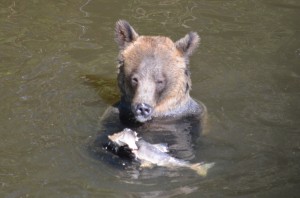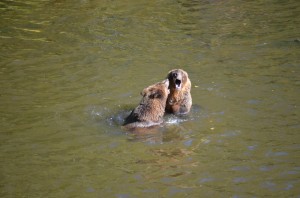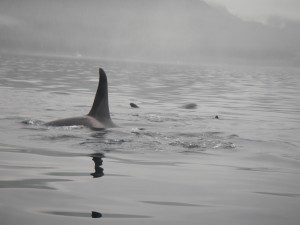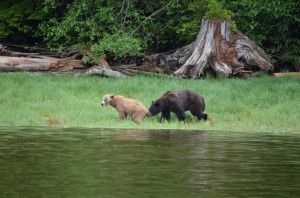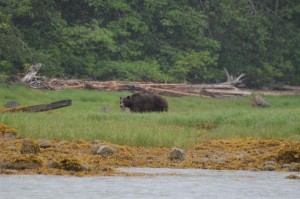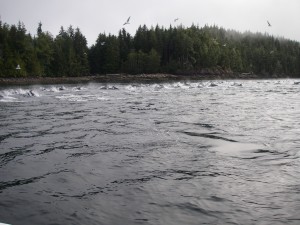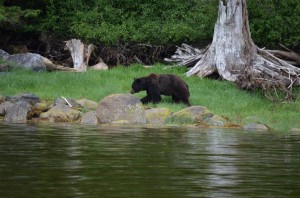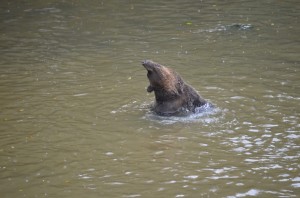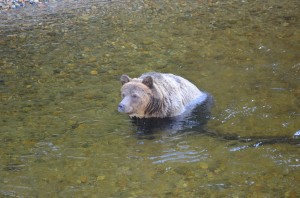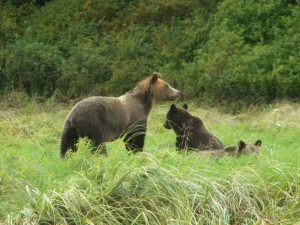
This mother grizzly bear with second year cubs was located part way up the Glendale River estuary. The viewing of grizzly bears in the spring and early summer occurs along the shore of Knight Inlet and frequently in a river estuary. It is about an hour and fifteen minute boat ride from the lodge to a float where we transfer to a 3.5 meter (sixteen foot) flat bottom skiff which provided stable viewing for the bears along the shore. As the tide rises and because the skiff has a very shallow draft we are able to proceed up the river and follow the bears into the taller sedge grass.
